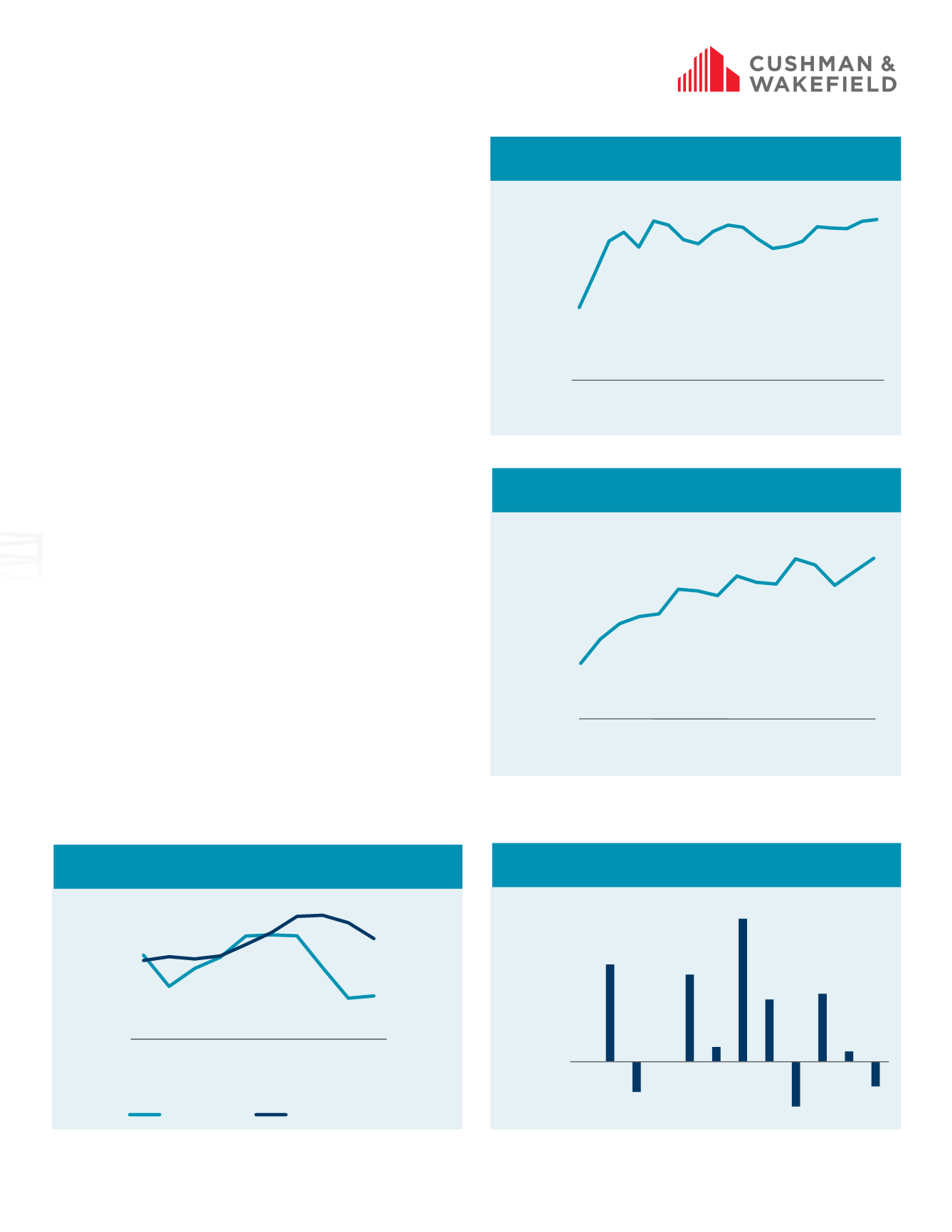

Cushman & Wakefield
/
21
A diverse set of oil producers
Economic growth related to the oil industry has varied across
Latin America due to the different political structures and
economic conditions in the region’s countries. Between 2006 and
2013, strong growth in the energy sector supported the broader
economic growth enjoyed by the top four oil producing countries
in Latin America — Brazil, Colombia, Mexico, and Venezuela.
Population and economic growth led to increasing demand for
oil products in other countries in the region. On the supply side,
Brazil and Colombia experienced robust development during the
same period, and favorable investment terms from oil companies
led to increased production. Note that Mexico and Venezuela are
important sources of crude oil for the United States, but their oil
industries are government-dominated. Those governments limited
the amount of reinvestment into exploration, production, and
refining, which eventually resulted in output declines.
Caracas, Mexico City, Bogotá and Rio office markets –
Oil influenced
Of the top four oil countries in Latin America, Brazil and Colombia
have the largest number of foreign companies that own domestic
oil assets. In Venezuela, international firms account for only a
35% share of oil leases. Mexico only opened up its government
monopoly-led oil industry beginning in 2014. Of the major Latin
American oil-centric metro markets, Caracas has an office market
that is highly influenced by the oil industry, while office markets
in Mexico City and Bogotá are impacted to a lesser degree. São
Paulo, a business powerhouse in Brazil, is home to a number of oil-
related companies, but the lion’s share of oil firms are based in Rio
de Janeiro, which is closer to the country’s largest producing fields.
Oil is not what it used to be, except in Venezuela
Currently, Mexico and Brazil have complex and diversified
economies with employment growth correlating primarily to
manufacturing and services. Mexico City’s employment base is
spread across a number of industries other than oil, especially
financial services. Rio de Janeiro boasts a sizable oil industry,
but São Paulo’s economy is more about manufacturing and the
financial services sector. Meanwhile, Bogotá is enjoying strong
growth due to macroeconomic stability strong enough to
overcome a weaker oil export value. Caracas, however, sits apart
as its economy is dominated by oil. The negative impact of low oil
prices on this city’s office market has been compounded by the
catastrophic mismanagement of the overall economy in Venezuela.
LATIN AMERICA OIL PRODUCTION
Source: EIA, Cushman & Wakefield Research
LATIN AMERICA GAS PRICE
Note: Price represents the average price for Venezuela, Colombia, Brazil, and Mexico
Source: World Bank, Colombian Oil and Gas Information System, Brazilian National
Agency for Oil, Mexican National Oil Company (Pemex), Cushman & Wakefield Research
LATIN AMERICA EMPLOYMENT, ANNUAL GROWTH
Note: Employment figures are the sum of the five tracked oil markets
Source: National Statistics Bureaus, Cushman & Wakefield Research
OIL PRICE VS. LATIN AMERICA RENT CORRELATION
Note: Rental is average rent for the five tracked oil markets in Latin America
Source: EIA, Cushman & Wakefield Research
Thousand people
-400
-200
0
200
400
600
800
1,000
1,200
2004
2005
2006
2007
2008
2009
2010
2011
2012
2013
2014
2015
$0
$10
$20
$30
$40
$0
$20
$40
$60
$80
$100
$120
$140
2007
2008
2009
2010
2011
2012
2013
2014
2015
Q2-2016
$ per sq m per month
$ per barrel (Brent)
Oil Price
Office Rent
5,500
6,000
6,500
7,000
7,500
8,000
8,500
1995
1997
1999
2001
2003
2005
2007
2009
2011
2013
2015
Thousands of bpd
$0.30
$0.40
$0.50
$0.60
$0.70
$0.80
$0.90
$1.00
Jan-09
Oct-09
Jul-10
Apr-11
Jan-12
Oct-12
Jul-13
Apr-14
Jan-15
Oct-15
Jul-16
$ per liter









